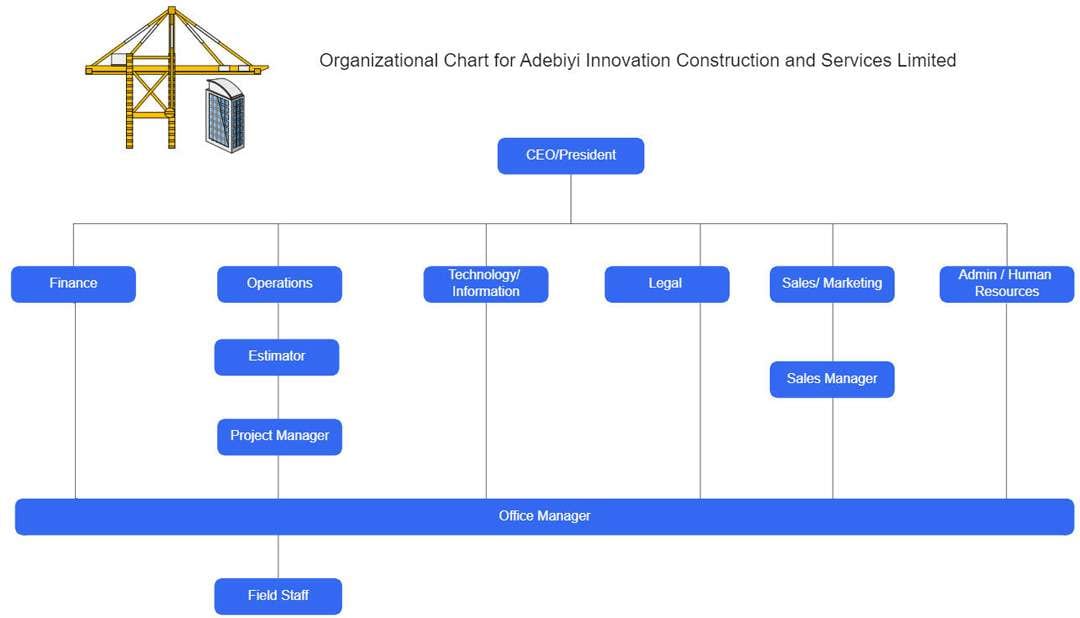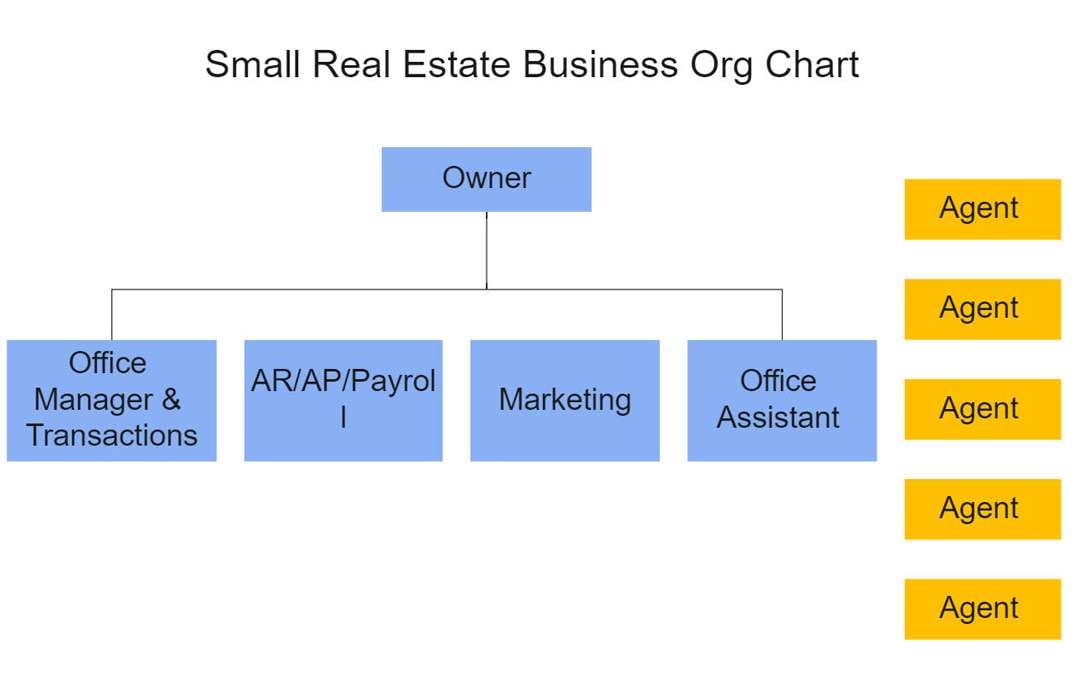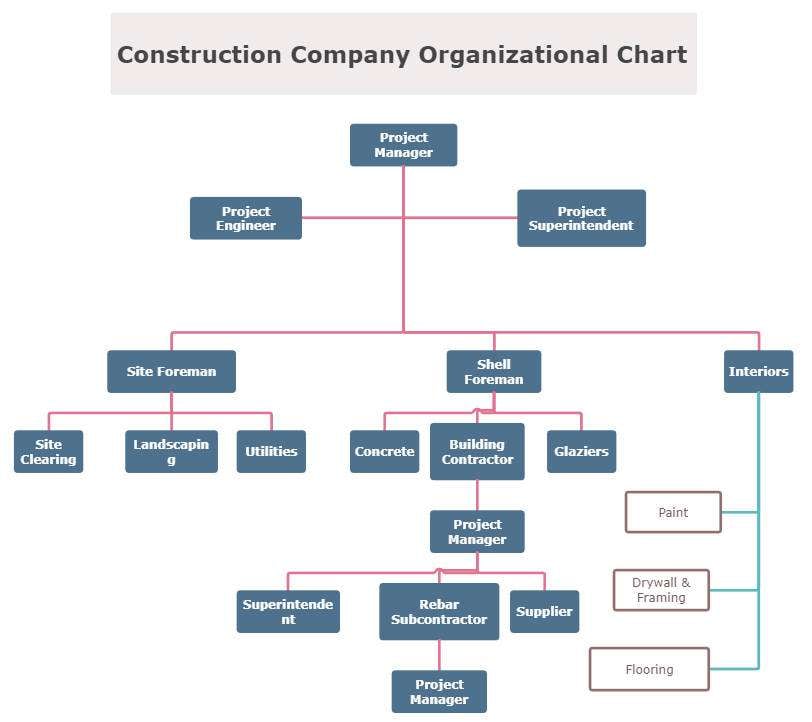A construction company organizational chart provides a clear overview of roles and responsibilities, promotes efficient communication, and aids in identifying skill gaps and succession planning.
Whether it's a large multinational corporation or a small construction company, organizational charts help optimize workflow and coordination. In this article, we will discuss everything you need to know about organizational charts in construction companies.
Contents of this article
Part 1. Templates of Construction Company Org Chart
Here are some examples of construction company organizational structures.:
Example 1: Construction Company Org Chart
The construction organizational chart displays roles and responsibilities in a large firm.
It includes executives at the top, with departments like project management, design, procurement, and construction. Each department has managers and specialized staff overseeing different aspects of the construction process.
Example 2: Small Construction Company Organizational Chart
Small construction companies have a simpler organizational structure than larger ones. With fewer employees, they have a flatter hierarchy for better communication.
Top management, usually the company owner or partners, oversees departments like project management, site supervision, and administration.
Example 3: Real Estate Organizational Chart
Real estate companies have unique construction company organograms for efficient operations.
The chart focuses on property development, sales, marketing, and asset management. Boards of directors and executive management make top-level decisions. The structure includes divisions for land acquisition, legal affairs, construction, marketing and sales, property management, and finance.
Example 4: General Contractor Organizational Chart
The construction site hierarchy chart of a general contractor oversees all construction activities. The contractor coordinates subcontractors, suppliers, and trades.
Project managers oversee project phases, while superintendents, estimators, and field personnel ensure smooth workflow and efficient project delivery.
Common Divisions in a Construction Company
The common divisions in a construction company are discussed below:
1. Operations/Construction
The Operations/Construction division is central to any construction company. It manages the planning, execution, and completion of construction projects, with a focus on turning architectural designs into construction firm organizational charts.
2. Finance & Accounting
The Finance & Accounting division is the financial backbone of a construction company. They handle project costs, invoicing, budgeting, and financial reporting. They provide important financial insights for decision-making, cost estimation, and risk assessment.
3. Business Development & Marketing
The Business Development & Marketing division is vital for a construction company's growth and market presence. They identify new business opportunities, build client relationships, and promote the company's services.
4. Human Resources
The Human Resources division manages the company's employees, its most valuable asset. They handle recruitment, training, performance evaluation, employee relations, and organizational development. They ensure compliance with labor laws, promote a positive work environment, and address HR-related issues.
5. Information Technology
In the digital era, the Information Technology division is essential for construction companies. They manage technology infrastructure, software applications, and data management systems. They ensure the company's IT infrastructure is secure, reliable, and up to date.
Importance of an Organizational Chart
General contractor organizational chart serves as a blueprint for effective communication, decision-making, and workflow management within companies. Here are some reasons why constructing a well-designed and accurate organizational chart is important:
1. Clear Hierarchy and Reporting Lines: Organizational charts offer a clear visual representation of the hierarchy within a company, illustrating the reporting lines, levels of authority, and departmental relationships.
2. Efficient Communication: By providing a comprehensive overview of the organizational structure, a management hierarchy chart facilitates efficient communication by enabling employees to identify the appropriate channels for communication and collaboration.
Part 2. Construction Organizational Chart Examples
To further illustrate the significance of organizational charts in the construction industry, let's explore three examples:
1. Large Construction Company Org Chart
In a large construction company, like a multinational corporation, the construction organizational structure can be complex. This is because of the diverse projects and multiple hierarchical levels. It may include divisions based on regions, project types, and specialized departments, showing the intricate relationships and reporting structures.
2. Small Construction Company Org Chart
In contrast, a small construction company has a simpler construction site hierarchy chart. It has fewer hierarchical levels, showing a direct reporting structure and closer collaboration between departments. These charts highlight cross-functional teamwork and employees' ability to handle multiple roles.
3. Real-world examples
Examining real-world examples of construction company org charts provides invaluable insights into how industry leaders structure their organizations.
- Bechtel Corporation: Bechtel Corporation is a global construction company with a hierarchical organizational structure. The CEO oversees business units like infrastructure, power, and oil & gas.
- Bouygues Construction: Bouygues Construction is a French construction company with a hybrid organizational structure. It is divided into business units based on market sectors like building, civil works, and energy & services.
Part 3. Building the Right Organizational Structure with Edrawmax
Building the right company organizational chart is important for a construction company. To achieve this, we need an easy and fast org chart creator.
For creating an organizational chart for your construction company, you need Wondershare EdrawMax. The tool lets users create exceptional organizational charts. Listed below are the steps to create an organizational chart for a construction company with EdrawMax:
Step 1: Create a new org chart
Launch EdrawMax on your computer and select the "Organizational Chart" template from the available options.
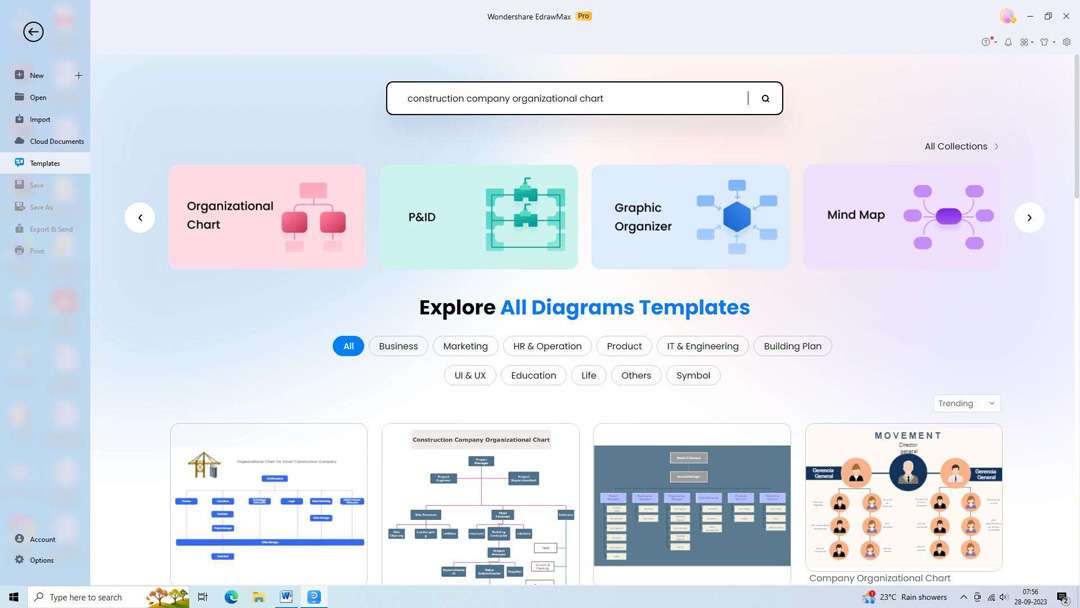
Click on the "New" button to create a new org chart project. Choose a suitable layout style for your construction organizational chart.
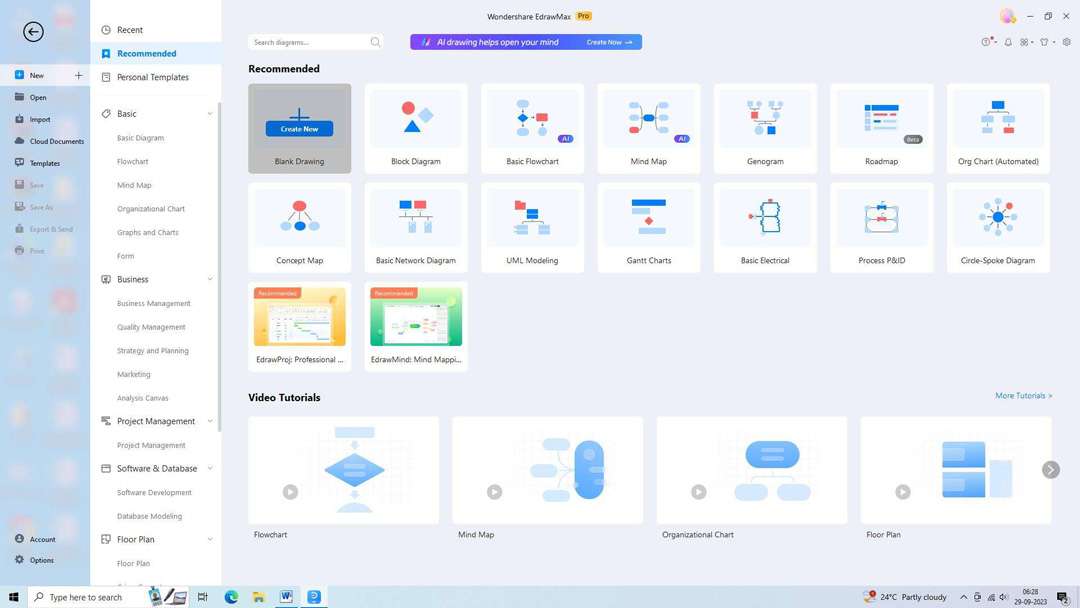
Step 2: Add symbols
Find and click the "Symbol" button in the EdrawMax toolbar. A symbol library will appear with shapes and icons representing positions or roles in the organizational structure of a construction company.

- Drag the relevant symbols onto the organizational chart canvas. Repeat for each position or role you want to include in the structure.
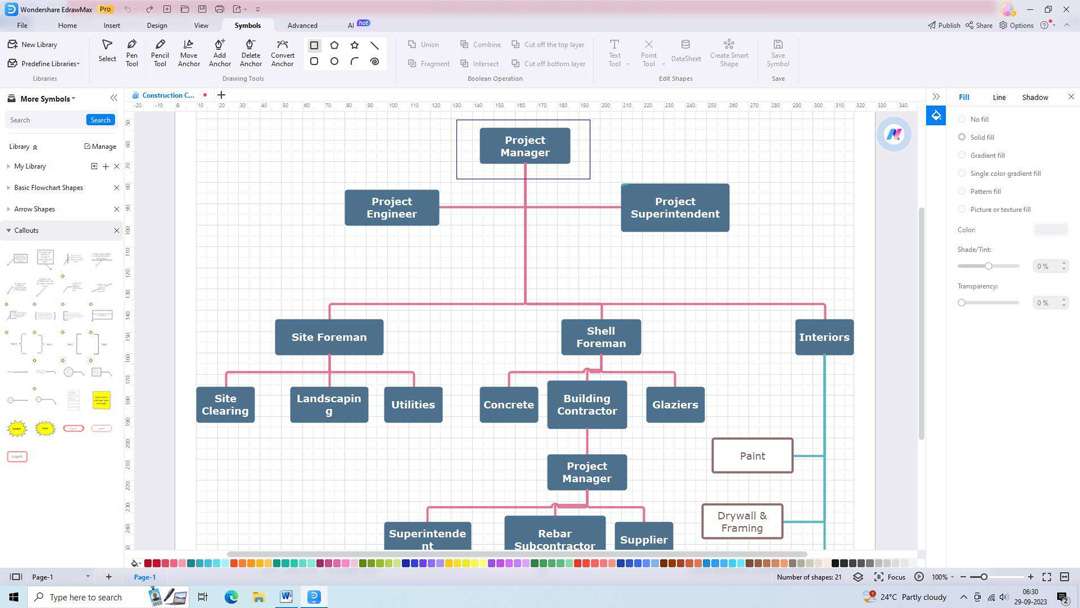
Step 3: Customize the org chart
Customize your org chart by double-clicking on a symbol to edit the text and add names, job titles, or relevant information. Use formatting options to modify the font, color, size, or style of the text.
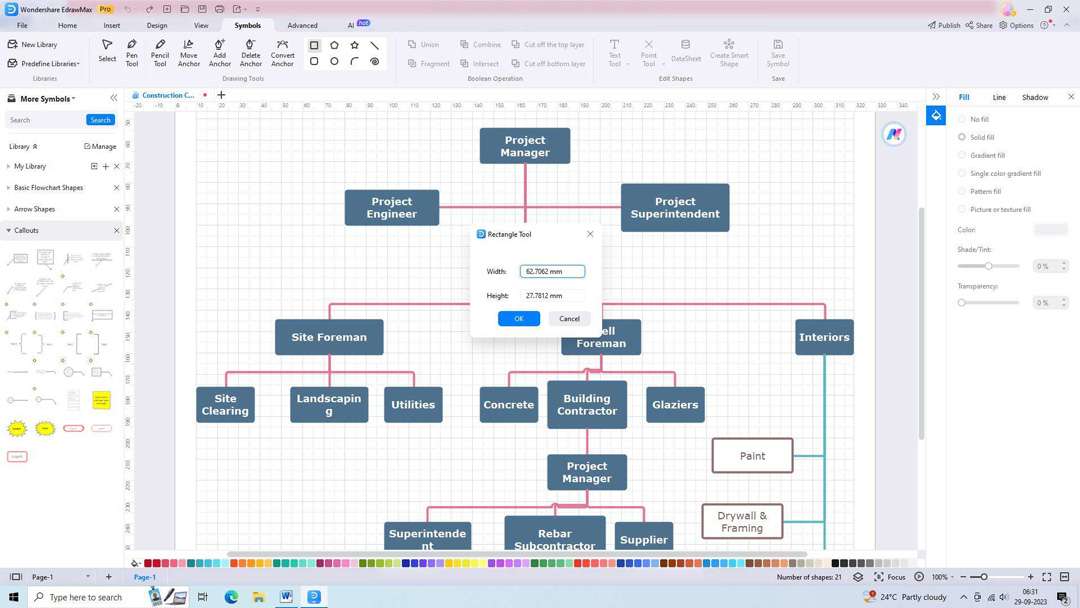
Adjust symbol size and position for a visually appealing structure. Connect symbols with lines or arrows to show reporting relationships or hierarchy.
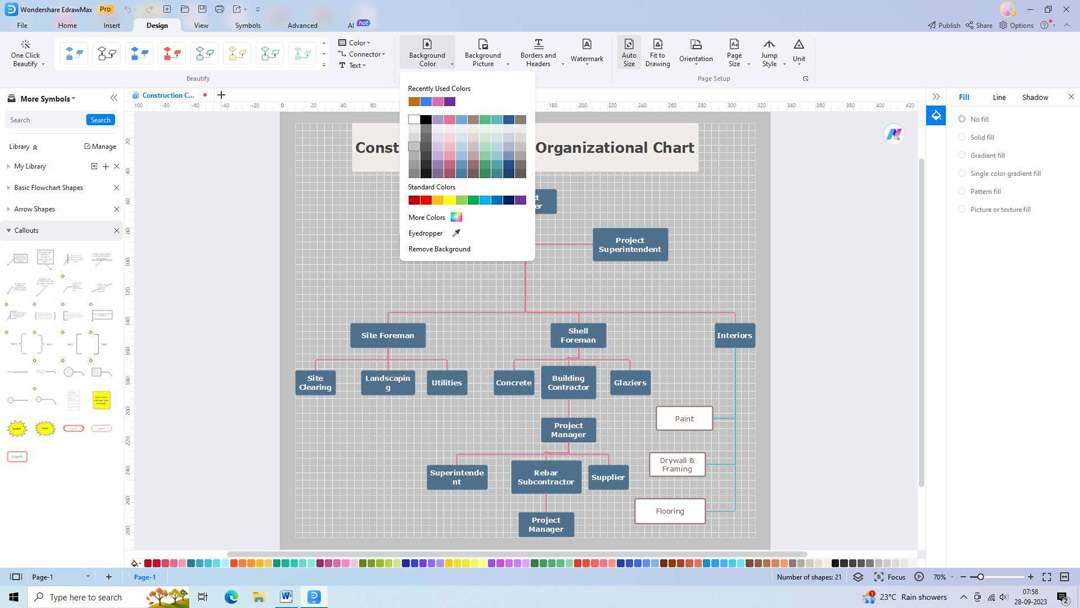
Step 4: Export the project
To export your construction organizational structure, click on the "File" tab in EdrawMax. Choose "Export" and select the desired file format (PDF, PNG, or PowerPoint).
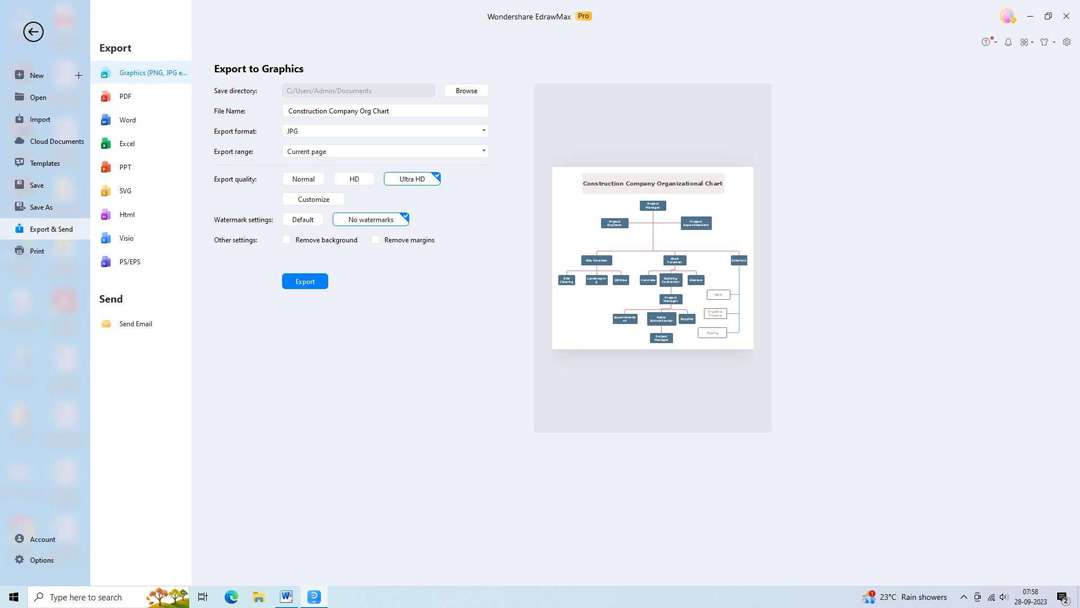
Specify the file name and location, then click "Save" to create the final version.
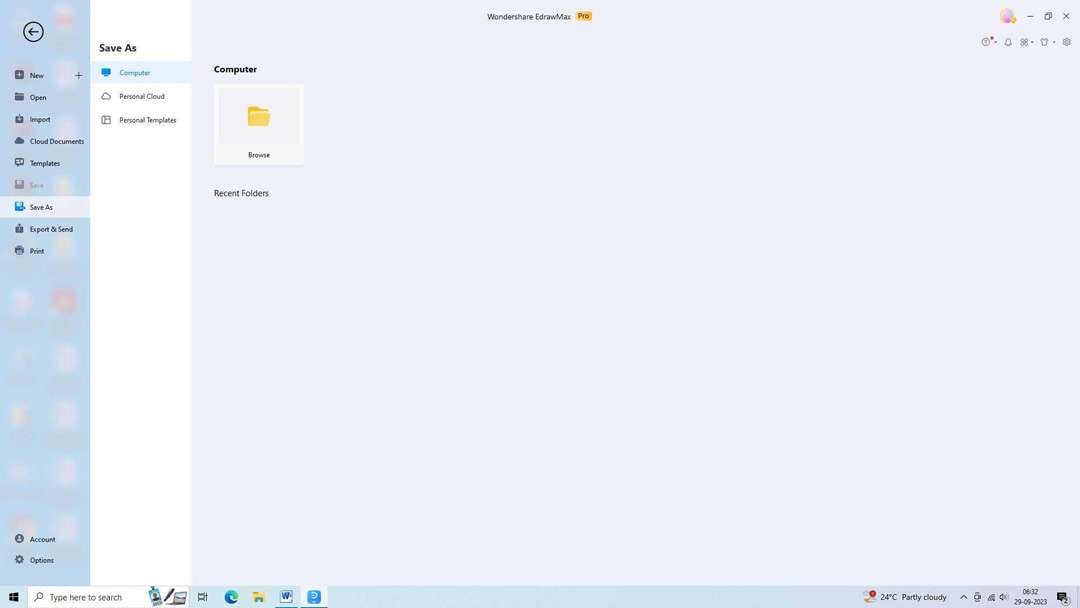
Conclusion
Implementing a construction company organizational chart requires analyzing business needs, identifying key roles and responsibilities, departmentalization, and delegating authority and decision-making. By implementing a well-designed organizational structure, your company can enhance efficiency, promote teamwork, and adapt to changes as they grow and expand. By utilizing tools like EdrawMax, coffee shop owners can easily create and customize organizational charts that align with their unique business needs.




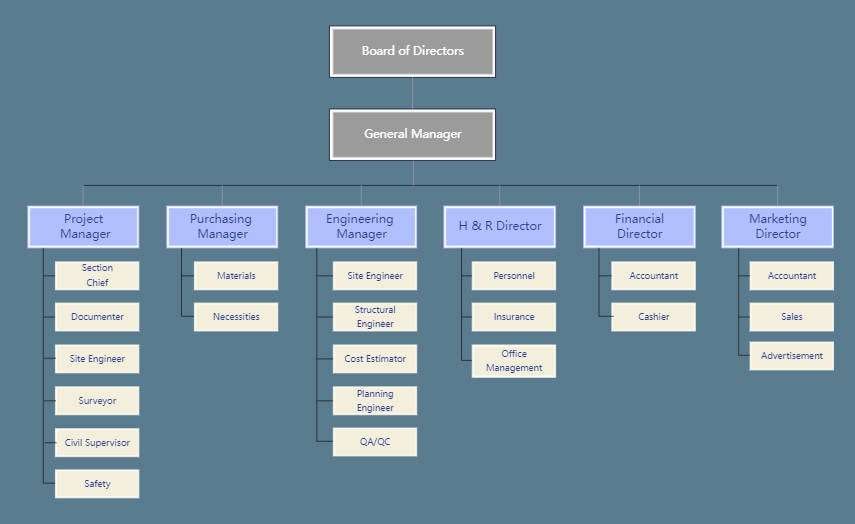
 below.
below.  below.
below. 